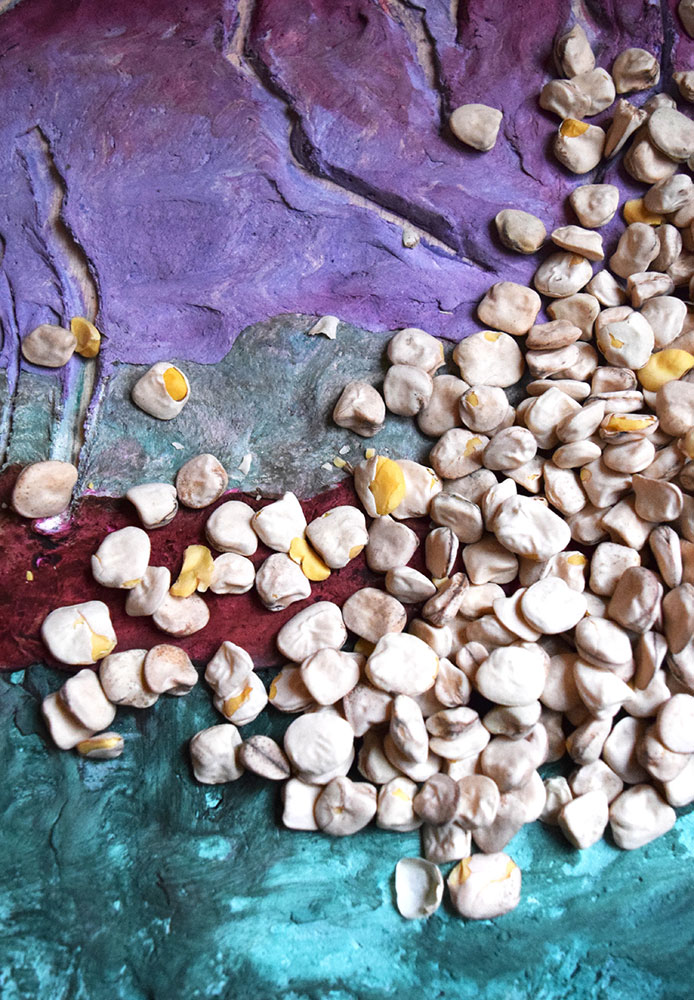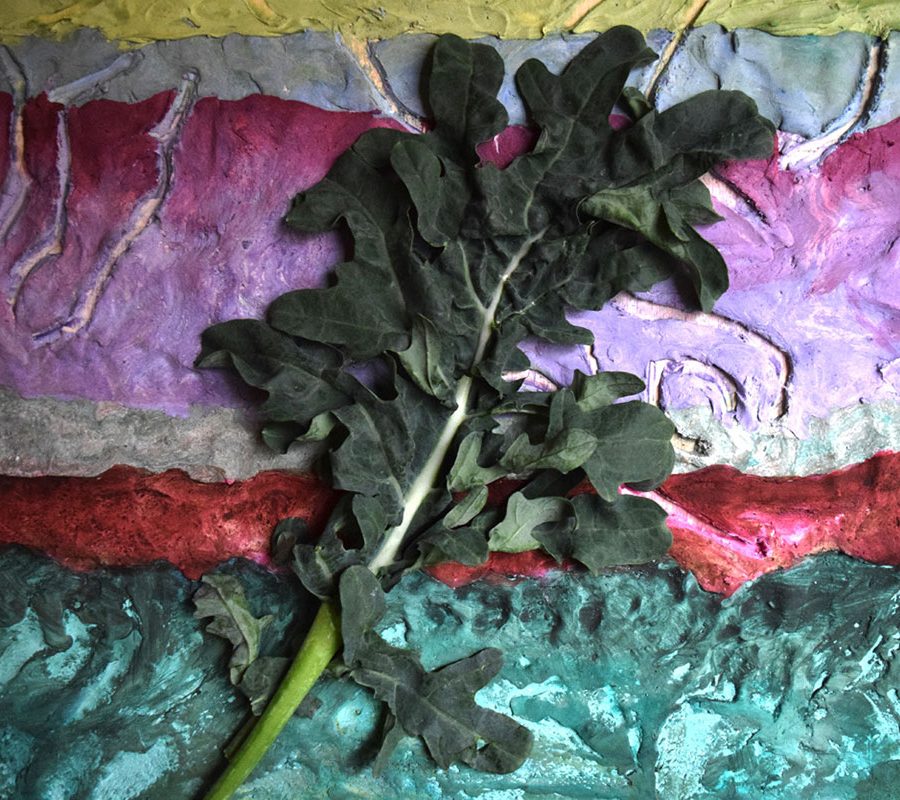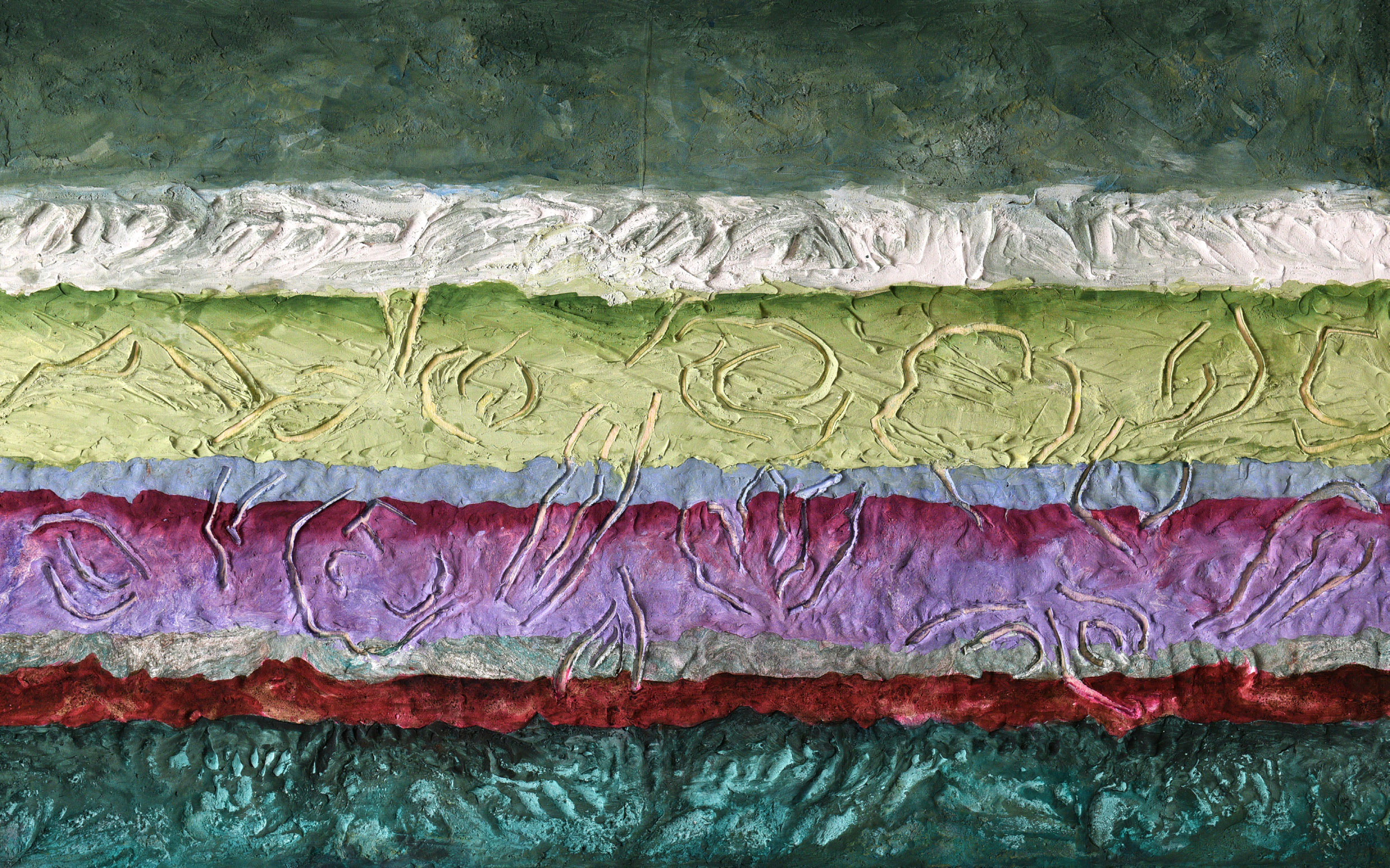WIN-
TER-
Murgia, an ancient and stony land, where miracles happen with little water, such as the spontaneous vegetation that characterizes the high concentration of biodiversity.

Here the cultivation of Cicerchia – Lathyrus sativus – has found its best habitat, a very ancient legume that comes from far away – Egypt and the Middle East – entrusted to the simple care of farmers, as a plant that adapts well to arid soils and without too many demands. But like all simple things it contains precious qualities. Rediscovered in recent years, it has received the PAT denomination – traditional agri-food product.
This legume allows us to prepare rich dishes in winter, thanks to its nutritional characteristics (calcium, phosphorus, proteins, starches, fibers, vitamins B1, B2, PP) also useful for dealing with the low seasonal temperatures. The peasant recipes of Murgia offer us many combinations of mixed dishes, with cereals, legumes and vegetables. It is a poor cuisine but it has outlined the fundamental traits of the precious Mediterranean diet, today recognized by UNESCO as oral and intangible heritage of humanity.
The Murgia area also gives us a bulb that needs to stay underground for four or five years before being harvested: the Lampascione – Leopoldia comosa. It rightfully bears the PAT denomination, identified among the oldest bulbs. Cultivated only in Puglia and Basilicata, it can also be found wild from winter to spring. The diuretic, anti-inflammatory and anti-tumor properties make this bulb with a powder pink heart even more precious. Cooked boiled or baked, it is an excellent low-calorie side dish. It retains its bitter aftertaste even when battered and fried.
This legume allows us to prepare rich dishes in winter, thanks to its nutritional characteristics (calcium, phosphorus, proteins, starches, fibers, vitamins B1, B2, PP) also useful for dealing with the low seasonal temperatures. The peasant recipes of Murgia offer us many combinations of mixed dishes, with cereals, legumes and vegetables. It is a poor cuisine but it has outlined the fundamental traits of the precious Mediterranean diet, today recognized by UNESCO as oral and intangible heritage of humanity.
The Murgia area also gives us a bulb that needs to stay underground for four or five years before being harvested: the Lampascione – Leopoldia comosa. It rightfully bears the PAT denomination, identified among the oldest bulbs. Cultivated only in Puglia and Basilicata, it can also be found wild from winter to spring. The diuretic, anti-inflammatory and anti-tumor properties make this bulb with a powder pink heart even more precious. Cooked boiled or baked, it is an excellent low-calorie side dish. It retains its bitter aftertaste even when battered and fried.

With winter vegetables, the color green arrives on the table in abundance. The range of greens is wide, from the intermediate color of the artichoke to the dark color of spinach, broccoli and turnip tops, to arrive at the light greens of cabbage that with its many varieties is also tinged with purple.
Among the Apulian horticultural species, we find a very ancient one, the one most similar to its wild progenitor: the curly cabbage – Brassica oleracea var. sabellica – thanks to local farmers who orally pass down the secrets for good cultivation. A typical rusticity characterizes this variety that in addition to possessing the typical nutritional qualities of cabbage, is considered a superfood, an antioxidant rich in flavonoids (in particular kaempferol, quercetin and isorhamnetin), folic acid and vitamins A, C, E, a source of calcium, zinc, iron.
The collection of wild herbs enriches the preparation of dishes and not only in taste. With the beautiful blue-flowered borage and nettle you can prepare fresh pasta and fillings that combine well with the variety of winter vegetables. The nettle is present all year round, we find it thriving even in winter. Rich in iron, silicon and calcium, it strengthens bones and hair. It has alkalizing and purifying properties, it is excellent boiled, in soups and omelettes.
The very precious rosehip berries, rich in vitamin C, that are collected in the woods of donnapaola are transformed into jam and rosolio to be enjoyed combined with the typical winter desserts of the Apulian tradition: Sasanelli, Cartellate, Mostaccioli, Dolci di mandorla. There are some to be enjoyed on evenings by the fireplace, in the company of donnapaola.
Among the Apulian horticultural species, we find a very ancient one, the one most similar to its wild progenitor: the curly cabbage – Brassica oleracea var. sabellica – thanks to local farmers who orally pass down the secrets for good cultivation. A typical rusticity characterizes this variety that in addition to possessing the typical nutritional qualities of cabbage, is considered a superfood, an antioxidant rich in flavonoids (in particular kaempferol, quercetin and isorhamnetin), folic acid and vitamins A, C, E, a source of calcium, zinc, iron.
The collection of wild herbs enriches the preparation of dishes and not only in taste. With the beautiful blue-flowered borage and nettle you can prepare fresh pasta and fillings that combine well with the variety of winter vegetables. The nettle is present all year round, we find it thriving even in winter. Rich in iron, silicon and calcium, it strengthens bones and hair. It has alkalizing and purifying properties, it is excellent boiled, in soups and omelettes.
The very precious rosehip berries, rich in vitamin C, that are collected in the woods of donnapaola are transformed into jam and rosolio to be enjoyed combined with the typical winter desserts of the Apulian tradition: Sasanelli, Cartellate, Mostaccioli, Dolci di mandorla. There are some to be enjoyed on evenings by the fireplace, in the company of donnapaola.
TRADITIONAL DISHES
LEGUMES HAVE ALWAYS REPRESENTED THE OPTIMAL SINGLE DISH FOR THE WINTER PERIOD, COMBINED WITH CEREALS, VEGETABLES OR MEAT SAUCES. THE SIMPLE DISH THAT WAS PREPARED BY SOAKING LEGUMES AND CEREALS OVERNIGHT AND COOKING THEM IN THE MORNING, IN A SINGLE POT AND WITH THE ADDITION OF BAY LEAVES DURING COOKING TO FACILITATE DIGESTION.

FIRST COURSES
Among the typical first courses, you can’t miss the fresh pasta cooked with vegetables and sautéed in a terracotta pan with excellent olive oil and garlic, to enhance the flavors of the vegetables. Fresh pasta is also found in a typical recipe with white meat broth. The fragrant mixed ragù of red meats and fresh pasta cavata is a must. While spaghetti seasoned with tasty sauces represent the quick traditional dish. Some preparations……
Pingnatidd di legumi – legumi soup
The legumes of your choice, broad beans, chickpeas, beans, peas, are cooked with herbs, onion and bay leaves, in the typical terracotta container “Pignatidd” which has the advantage of ensuring cooking and keeping the flavours intact.Beans or chickpeas du zappator – legume with chard
Whether they are chickpeas or beans, they should be soaked in water and bicarbonate overnight and then cooked. Once cooked, they will be added to the boiled chard and seasoned with a soffritto of olive oil, onion and dried chili pepper.Crapiata – wheat and legumes
Cook the mixed legumes – broad beans, chickpeas and grass peas – together with the wheat, in the terracotta tagame over a low heat, with bay leaves. Once the heat is off, add the lentils that have been cooked separately. Serve with a drizzle of extra virgin olive oil and toasted bread.Chickpea and Chicory
The chickling pea, soaked and cooked with onion and bay leaves, is combined in the same dish with wild chicory and the whole thing is seasoned with a sauté of olive oil, garlic and cherry tomatoes.Beans and turnips
The beans and turnip tops, boiled separately, are served together on the same plate, seasoned with a drizzle of extra virgin olive oil and a squeeze of lemon.Chickpea and black olive puree
Cook the chickpeas with onion and bay leaves, puree them and season them in a bowl with a sauté of oil, black olives and cherry tomatoes. Serve hot.U’ ggren pstet – wheat pesto ragù
Crush the wheat in a mortar and cook it with water and salt. Drain and season with pork ragù. Sprinkle with pecorino cheese and serve hot.Skerz d’amell and turnip tops – cavatelli with turnip tops
Cook the cavatelli and turnip tops in the same pot with water and salt. Separately, prepare a soffritto of olive oil, garlic, anchovy fillets and breadcrumbs. Drain the pasta with the vegetables and season with the sauce. If desired, add some chili pepper.C’c’redda in brodo – fresh pasta in broth
This fresh pasta prepared with semolina flour and eggs, has the shape of small pieces almost reminiscent of chickpeas. Separately prepare a chicken or turkey meat broth, with onion, celery, potatoes and tomato. Add the broth to the previously heated pasta and season with pecorino cheese.Orecchiette with curly cabbage
Cook the homemade orecchiette in the same water with the kale. Separately, prepare a dressing based on olive oil, bacon, bay leaves and pour over the pasta and drained vegetables. Mix and serve with a handful of local aged cheese. The variation includes cauliflower or broccoli instead of kale.Gnitt’l d’ s’ m’ laùn al sugo – Flour gnocchi with sauce
This type of fresh pasta is kneaded with dark, wholemeal semolina. Prepare pieces of two or three centimetres and remove them with your fingers. Heat and season with mixed meat ragù of veal, pork, lamb.Spaghetti du train’r – the carter’s spaghetti
Cherry tomatoes, garlic, olive oil, capers and black olives, tasty ingredients to cook together and pour into a soup bowl, over freshly drained spaghetti.SIDE DISHES
Seasonal vegetables are an excellent side dish for grilled meats. The preparation is simple because the raw materials have so much character and cooking in terracotta gives that ancient flavor that can still be found in grandparents’ houses, on the Murgia. Some preparations…
Boiled and golden lampascioni
Cook the lampascioni in water, drain and mix with flour, eggs, pecorino cheese, parsley, stale bread crumbs and salt. Fry in small doses in olive oil until golden. Serve hot, but they are also tasty cold.Stewed turnips
Cook the turnips in a low pan, with olive oil, garlic cloves and salt, at the end of cooking.Arraganet cabbage (au gratin)
Boil the cabbage and place it in a pan with olive oil and garlic. Sprinkle with aged cheese and grated stale bread. Bake.Mushrooms
Cook the mushrooms cut into pieces, with olive oil, garlic and salt. At the end of cooking add chopped parsley.MEATS
Meats, once considered the Sunday and holiday dish, represented the alternative protein intake to legumes, an inexpensive food consumed during the week. The Sunday ragù, with its long cooking, released intense aromas from early in the morning, when it was cooked with the herbs of the garden. Some preparations…
Meat ragout in pieces
Fry the pieces of meat (or alternatively the meat rolls) in oil, onion, celery and carrot, deglaze with wine and add plenty of tomato sauce. Cook over low heat for several hours. Serve hot.Stew with potatoes and lampascioni
Arrange the potato cubes and raw lampascioni in the pan, add the pieces of stewed meat and season with olive oil, salt and pepper. Bake in the oven. Serve hot.FOCACCIA
The leavened preparation that sometimes replaced bread on Sunday tables was focaccia. A dough that would rise for several hours near the fireplace, until it filled the typical blackened tin pan with scalloped edges. Puglia finds one of its typicalities in this baked product. Some preparations…
Focaccia with tomato
Prepare the dough with durum wheat flour, yeast and twenty percent boiled potato, salt and warm water. Let it rise for about two hours, put it in a pan and season with plenty of tomato, oil, oregano and olives. Let it rise for another half hour and bake.Focaccia With Potatoes
The variation in this focaccia is represented by the potatoes cut thinly and placed on the surface, in place of the tomatoes.Pettole
Dough made of flour, water and yeast, with a soft consistency that is fried in small portions, after leavening. At the end of cooking they can be sprinkled with salt or sugar, or dipped in vincotto if prepared during the Christmas holidays.SWEETS
Winter desserts are an important part of the festivities of these cold months. You can consume them lightheartedly, given the low temperatures. Among the ingredients for the preparations, we find a very typical one: the vincotto that is used to coat shortcrust pastry and fried pastries. It is obtained by cooking figs or grape must for a long time. The resulting reduction is used to coat and enrich the flavor of the shortcrust pastry. Some preparations…
Cartellate
Sweet shortcrust pastry worked with a lot of oil, cut into strips and wrapped in a spiral, pinching the dough. It can be baked or fried. Finally it is covered with cooked wine or honey.Purece – Baked Almond Sweets/h6> A sweet made with shelled almonds, sugar, flour, cinnamon, cloves and bitter cocoa. Cover with sugar icing when cooked.
Almond bites
Single-serving sweets with a shortcrust pastry lining and a filling made of chopped almonds, sugar and liqueur. Baked in the oven.Almond paste sweets
Peel and chop the almonds, mix the resulting flour with sugar dissolved in water. Let the mixture cool and shape the sweets. Decorate and flavor.Mostaccioli
Sweets made with cooked wine, flour, sugar, dark chocolate and chopped almonds. Mix and flavour with grated orange and lemon peel, form small portions and bake.EDIBLE HERBACEOUS SPECIES OF THE APULIA FLORA
PRESENT IN THE MURGIAN TERRITORY OF DONNAPAOLA
Biodiversity is one of the distinctive features of the donnapaola company. Its territory is rich in edible plants that have always accompanied the life of the populations of this land. Used for food and medicine, wild herbs represent a true heritage. Leaves, stems, roots and flowers, everything contributes to the recovery of good practices.
Below we offer you a list of plants used for the preparation of dishes.
Below we offer you a list of plants used for the preparation of dishes.
| NOME SCIENTIFICO | NOME VOLGARE | FAMIGLIA | PARTE EDULE |
|---|---|---|---|
| Anagallis arvensis L. | Centocchio dei campi | Primulacea | Foglia |
| Asparagus acutifolius L. | Asparago pungente | Liliaceae | Stelo |
| Asphodeline lutea L. Rchb. | Asfodelo giallo | Liliaceae | Stelo radice |
| Bellis perennis L. | Pratolina comune | Asteraceaea | Foglia fiore |
| Calamintha nepeta (L.) Savi | Mentuccia comune | Lamiaceaea | Foglia |
| Cichorium intybus L. | Cicoria comune | Asteraceaea | Foglia |
| Clinopodium vulgare L. subsp. | Clinopodio dei boschi | Laminaceaea | Foglia |
| Echium vulgare L. | Viperina azzurra | Boraginaceae | Foglia |
| Ferula communis L. | Ferula comune | Apiaceae | Stelo |
| Foeniculum vulgare Mill. | Finocchio comune | Apiaceae | Stelo infiorecsenza |
| Malva sylvestris L. | Malva selvatica | Malvaceae | Fiore |
| Marrubium vulgare | Marrubio comune | Lamiaceae | Stelo foglia |
| Nigella damascena L. | Damigella scapigliata | Ranuncolaceae | Foglia |
| Onobrychis caput-galli (L.) Lam. | Lupinella cresta di gallo | Fabaceae | Baccello fresco |
| Ornithogalum umbellatum L. | Latte di gallina comune | Liliaceae | Bulbo |
| Picris hieracioides L. | Asparagina comune | Asteraceae | Foglia |
| Portulaca oleracea L. subsp. | Porcellana comune | Portulacaceae | Foglia stelo |
| Reichardia picroides (L.) Roth | Grattalingua | Asteraceae | Foglia |
| Rubus ulmifolius Schott | Rovo comune | Rosaceae | Frutto seme |
| Salvia verbenaca L. | Salvia minore | Lamiaceae | Foglia |
| Sanguisorba minor Scop. | Salvastrella minore | Rosaceae | Foglia |
| Scolymus hispanicus L. subsp. | Cardogna comune | Asteraceae | Radice foglia |
| Scorpiurus muricatus L. | Erba lombrica comune | Fabaceae | Baccello fresco |
| Sedum rupestre L. subsp. | Borracina rupestre | Crassulacea | Stelo foglia |
| Sonchus oleraceus L. | Grespino comune | Asteraceae | Foglia |
| Tordylium apulum L. | Ombrellini Pugliesi | Apiaceae | Seme foglie |
| Tragopogon porrifolius L. | Barba di becco violetta | Asteraceae | Radice foglia stelo |
| Tribulus terrestris L. | Tribolo comune | Zigophylitaceae | Foglia stelo |
| Urospermum dalechampii (L.) | Boccione maggiore | Asteracea | Foglia |
| Vicia villosa Roth | Veccia pelosa | Fabaceae | Foglia stelo |
| Salvia verbenaca L. | Salvia minore | Lamiaceae | Foglia |
| Sanguisorba minor Scop. | Salvastrella minore | Rosaceae | Foglia |
| Scolymus hispanicus L. subsp. | Cardogna comune | Asteraceae | Radice foglia |



